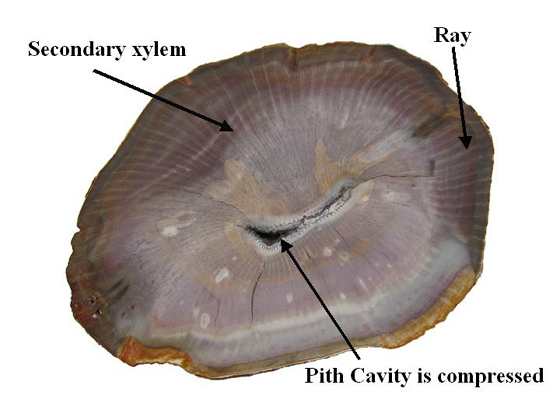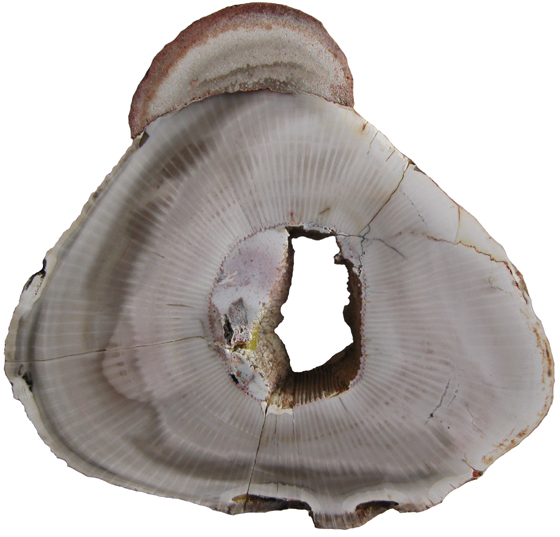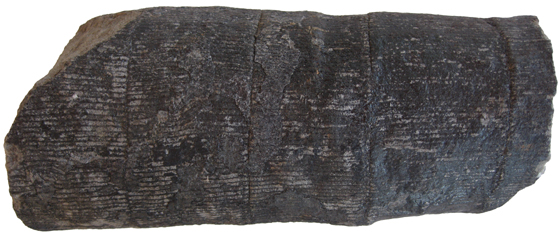
 |
 |
Calamites Stem (Arthropitys)
 Arborescent Horsetail Calamitean Stem Arthropitys sp. Bieland, Maranhao Province, Brazil Pedra de Fogo Formation Permian 10.5 cm x 8 cm |
| The name Calamites was intially given to pith casts. The genus now encompasses various preservation modes of stems, pith, and the central canal. Possibly the most common petrified calamitean stem type is Arthropitys (Taylor, Taylor, and Krings, 2009, p. 345). The stem of the Arthropitys specimen pictured above was compressed during the fossilization process. The stem is made mostly of secondary xylem. Medullary rays can be seen radiating from the center to the periphery. Bark is not preserved on this Permian aged specimen from Brazil. The periphery of the inner bark of Arthropitys possessed air spaces called valecular canals. |
 Arborescent Horsetail Arthropitys sp. Bieland, Maranhao Province, Brazil Pedra de Fogo Formation Permian 11.5 cm x 10 cm |
The permineralized Calamites stem (Arthropitys) from Brazil exhibits a partially hollowed out pith. The pith would often fill with sediment during fossilization creating an internal cast or steinkern. |
 Calamites Pith Cast Carboniferous West Virginia 16 cm long x 6.5 cm diameter |
The pith cast of Calamites is the most common plant steinkern. As a Calamites tree matured the center of the stem (pith) became hollow, developing into a tube-shaped air cavity. The pith cast preserves an impression of the pith cavities outside surface, which represents the inside vascular and cortex tissue (Taylor, Taylor & Kring, 2009, p. 23). |
Taylor, T.N., Taylor E.L. & Krings, M. (2009). Paleobotany: The Biology and Evolution of Fossil Plants [2nd Ed]. New York: Academic Press. |










